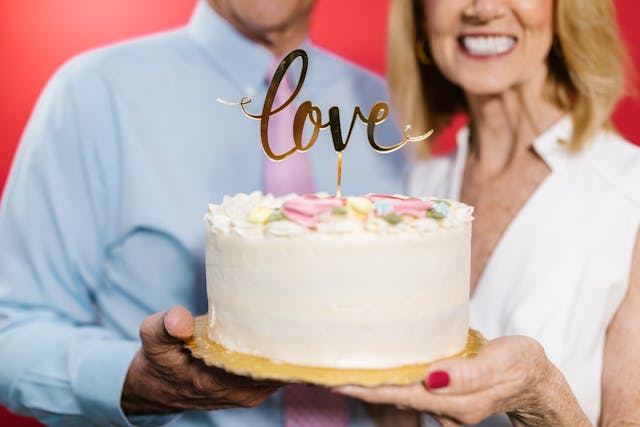Local News
Your Guide to Hosting Any Event: Tips and Tricks
Published
11 months agoon

Introduction to Event Hosting
Event hosting is both an art and a science, blending creativity with meticulous planning. Whether you’re organizing a cozy dinner party, a corporate seminar, or a grand wedding, the essence of successful event hosting lies in understanding your audience and setting the right tone. Every great event begins with a vision. What experience do you want your guests to have? This foundational question will guide every decision you make, from event space rental in Chicago to the menu, décor, and entertainment.
In today’s fast-paced world, hosting an event can seem daunting, but with the right tools and techniques, it becomes an exhilarating adventure. The key is to start early, breaking down the planning process into manageable steps. From budgeting and scheduling to crafting personalized invitations, each detail counts.
Moreover, consider the atmosphere you wish to create. Lighting, music, and even the seating arrangement play crucial roles in setting a mood that resonates with your theme. Remember, the goal is not just to host an event but to create lasting memories for your guests. So, roll up your sleeves and dive into the exciting world of event hosting, armed with tips and tricks that will ensure your gathering is unforgettable.

Understanding Your Audience
Understanding your audience is the cornerstone of any successful event. Before you dive into planning, take a moment to consider who will be attending. Are they industry professionals, families, or a mix of different demographics? Knowing your audience’s preferences, interests, and expectations will shape every aspect of your event, from the venue selection to the type of food served.
Start by gathering insights through surveys, social media polls, or informal conversations. This information will help you tailor your event to resonate with attendees. For example, if your audience skews younger, consider incorporating modern technology, like interactive apps or social media-friendly photo ops. Conversely, for a more mature crowd, a sophisticated ambiance with classic entertainment might be more appropriate.
Additionally, anticipate the needs of your audience. Are they traveling from afar? Providing accommodations or easy transportation options can enhance their experience. Remember, the more connected your attendees feel to your event, the more likely they are to engage fully and leave with lasting memories. Ultimately, a thorough understanding of your audience transforms an ordinary gathering into a remarkable event that feels personalized and impactful.
Setting a Budget
Setting a budget is arguably the most crucial step in planning any event, whether it’s a birthday party, a wedding, or a corporate gathering. Begin by determining your overall financial limit. This will not only guide your decisions but also prevent you from overspending.
Next, break down your budget into categories: venue, catering, entertainment, decorations, and any additional costs like invitations or rentals. This segmentation allows you to see where your funds are allocated and where you might need to adjust.
Don’t forget to account for unexpected expenses — set aside at least 10% of your budget as a buffer for those surprise costs that always seem to pop up.
Consider exploring options like DIY decorations or potluck catering to save money. Additionally, research local vendors and compare prices; sometimes, a little negotiation can lead to significant savings.
Finally, keep track of your spending as you go. Utilize budgeting apps or simple spreadsheets to monitor your expenditures and ensure you remain within your limits. By carefully planning and sticking to a well-defined budget, you can host a memorable event without breaking the bank.
Choosing the Right Venue

Selecting the right venue is pivotal to the success of any event, whether it’s an intimate gathering or a large corporate conference. Start by identifying the purpose of your event. The ambiance should align with your theme — consider whether a formal setting suits a corporate meeting or if a cozy café is better for a birthday celebration.
Next, assess the location. Accessibility is key; ensure your venue is easy to reach for guests, with ample parking or public transport options. Also, think about the venue size. A space that’s too large can feel empty, while one that’s too small can lead to discomfort. Aim for a layout that facilitates interaction, whether through open spaces or designated areas for mingling.
Don’t overlook the venue’s amenities. Check for essential resources like audiovisual equipment, Wi-Fi, and catering options. It’s also wise to ask about accessibility features for guests with disabilities. Finally, consider your budget. Be upfront about your financial constraints, as many venues offer customizable packages that can help you achieve your vision without breaking the bank. By prioritizing these factors, you’ll create an unforgettable event experience.
Planning the Event Timeline
Creating an effective event timeline is crucial for ensuring a seamless experience for both you and your guests. Start by establishing a clear start and end time for your event. This will serve as your anchor, allowing you to work backward to allocate time for each component.
Begin with a detailed agenda that outlines every segment, from setup and guest arrival to activities, speeches, and wrap-up. For instance, if you’re hosting a wedding, account for hair and makeup, transportation, and any pre-ceremony rituals. Be realistic about the time each task will take — adding a buffer of 10-15 minutes can help prevent last-minute chaos.
Next, consider the flow of the event. Arrange activities in a logical sequence to maintain energy and engagement. For example, if you’re planning a corporate retreat, a mix of interactive workshops followed by networking sessions can keep attendees motivated.
Finally, share the timeline with your team and key stakeholders. Clear communication ensures everyone understands their roles and responsibilities, making it easier to adapt on the fly if needed. With a well-structured timeline, you’ll pave the way for an unforgettable event that runs like clockwork.
Essential Supplies and Equipment
- Seating Arrangements: Chairs, tables, and perhaps even lounge furniture should be comfortable and suited to your guest count. Consider renting for larger events.
- Tableware: Plates, utensils, cups, and napkins are essential, whether you choose disposable or reusable options.
- Catering Supplies: If you’re serving food, don’t forget serving platters, chafing dishes, and utensils. A good quality cooler can also help keep drinks chilled.
- Audio/Visual Equipment: Depending on the nature of your event, projectors, microphones, and sound systems might be necessary for presentations or entertainment.
- Decorative Items: Think centerpieces, table linens, and lighting. These add personality and ambiance.
- Cleaning Supplies: Stock up on trash bags, paper towels, and cleaning wipes to quickly manage spills or messes.
- First Aid Kit: Always a good idea to have on hand for any minor accidents, especially if you’re considering cpr courses in Hamilton.
Catering and Refreshments
When it comes to hosting an unforgettable event, catering and refreshments can make or break the experience. Start by understanding your guest demographics — consider dietary restrictions, preferences, and cultural backgrounds. This will not only demonstrate your thoughtfulness but also ensure that everyone feels included.
Next, choose a catering style that suits your event’s vibe. Buffet-style can create a relaxed atmosphere, while plated meals lend a touch of elegance. Don’t forget about appetizers; they set the tone and keep guests mingling. Finger foods or bite-sized treats can encourage conversation and make for a more engaging experience.
Beverages are equally important. Offer a mix of alcoholic and non-alcoholic options to cater to all tastes. Signature cocktails can add a unique flair, while a well-curated selection of wines pairs beautifully with the meal. Always provide enough water — infuse it with fruits or herbs for a refreshing twist.
Lastly, consider presentation. Beautifully arranged food and drinks not only please the palate but also serve as a visual delight. Remember, an event is as much about the experience as it is about the food, so ensure that your catering complements the ambiance you wish to create.
Marketing Your Event
- Define Your Target Audience: Understand who you want to attract. Tailor your messaging and channels to reach this specific group effectively.
- Leverage Social Media: Utilize platforms like Facebook, Instagram, and Twitter to share engaging content. Create event pages, post updates, and encourage attendees to share their excitement.
- Email Campaigns: Build an email list and send out invitations or newsletters. Keep your audience informed with reminders and sneak peeks of what to expect.
- Collaborate with Influencers: Partner with local influencers or community leaders who can help spread the word. Their endorsement can lend credibility and attract a larger crowd.
- Utilize Event Platforms: List your event on popular platforms like Eventbrite or Meetup. This can increase visibility and make it easy for people to RSVP.
- Create Eye-Catching Visuals: Invest in high-quality graphics and promotional materials. Visual appeal can capture attention and encourage shares.
Engaging Activities and Entertainment
- Interactive Games: Incorporate games that encourage teamwork and interaction. Think of trivia quizzes, scavenger hunts, or team-building challenges that suit your crowd.
- Live Performances: Hire local musicians, comedians, or magicians to add an element of surprise. Live entertainment not only captivates but also creates a lively atmosphere.
- DIY Stations: Set up craft or DIY stations where guests can create something tangible to take home. Whether it’s a cocktail mixing bar or a personalized photo booth, hands-on activities spark creativity.
- Themed Photo Opportunities: Designate an area for themed photo ops. Use props and backdrops that resonate with your event’s theme, encouraging guests to snap and share their experiences.
- Food Experience: Consider food stations or cooking demonstrations that allow guests to engage with the culinary aspect of the event. This not only tantalizes taste buds but also serves as a conversation starter.
Post-Event Follow-Up and Feedback
Once the confetti has settled and the last guest has left, the event may feel like a distant memory, but the work isn’t quite over yet. Post-event follow-up and feedback are crucial steps that can enhance future gatherings and strengthen relationships with attendees.
Start by sending personalized thank-you notes to your guests, speakers, and sponsors. A simple acknowledgment of their presence and contributions can foster goodwill and create a lasting impression. Consider using email for efficiency, but handwritten notes can add a personal touch that resonates well.
Next, gather feedback from attendees through surveys or informal conversations. Ask specific questions about their experience, what they enjoyed most, and areas for improvement. This not only shows that you value their opinions but also provides insightful data that can inform your planning for subsequent events.
Finally, share highlights from the event, including photos, videos, and key takeaways. This not only keeps the conversation going but also engages those who couldn’t attend. By taking these steps, you’ll not only refine your event-hosting skills but also build a community that looks forward to your next gathering.


